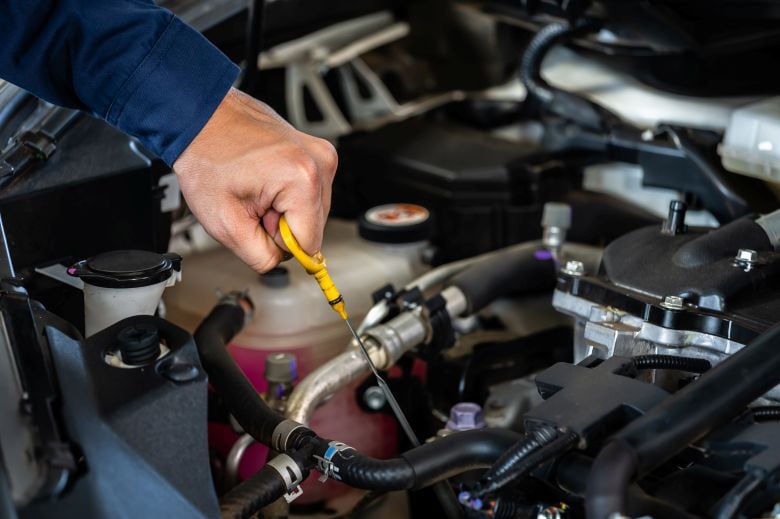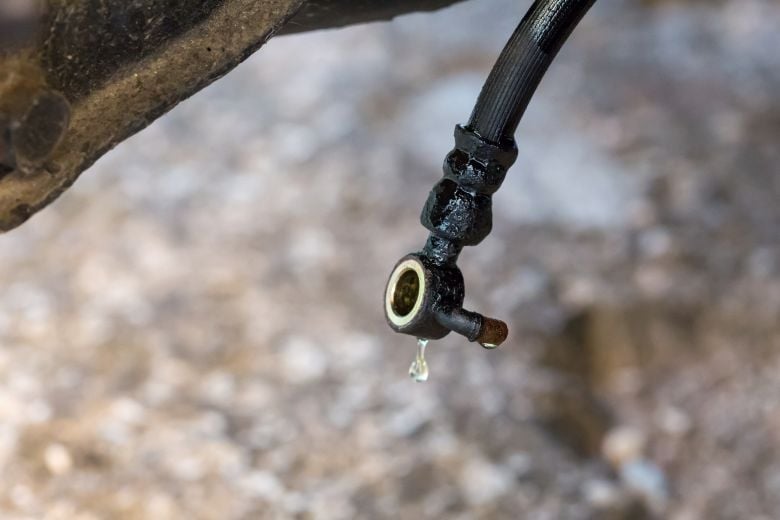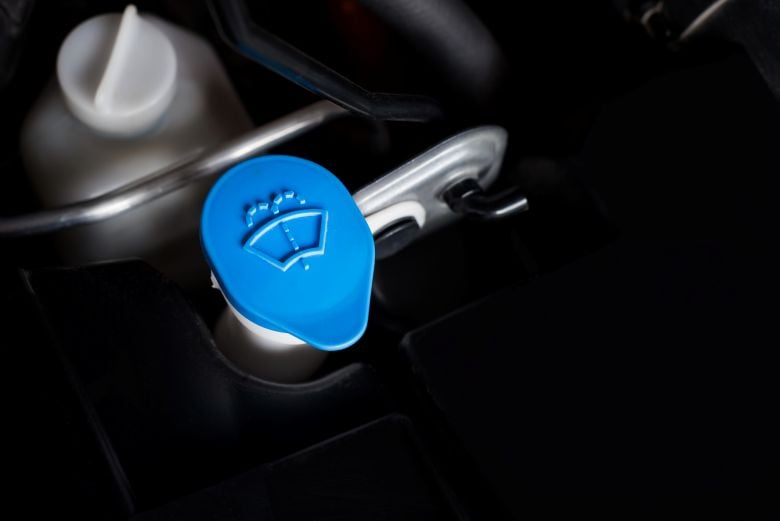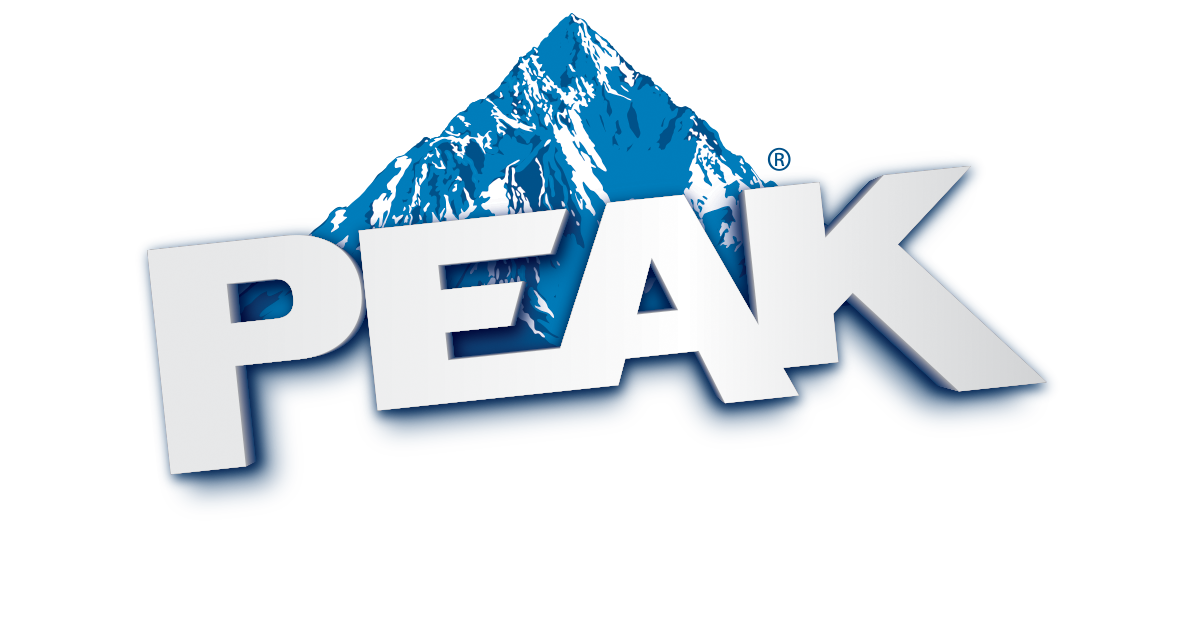
Preventive Car Maintenance: A Guide to Changing Transmission Fluid, Engine Oil, and More
- Vehicle Maintenance
- PEAK
- October 28, 2025
Our vehicle preventive maintenance guide covers common automotive fluids, from engine oil and brake fluid to antifreeze and windshield wash.
Preventive car maintenance and regular fluid checks improve vehicle performance, safety, and longevity. They're also common sources of confusion; today's vehicles use all kinds of different fluids, and they all have different maintenance requirements. Some of them are easy to check and change yourself. Others … not so much.
This guide demystifies fluid changes, explaining when and how to do them — and when to call on a pro for help. It covers five common automotive fluids, from engine oil and brake fluid to antifreeze and windshield wash.


Engine oil
What engine oil does
Engine oil keeps your pistons, valves, and other moving parts lubricated to reduce friction and guard against premature wear and tear. It's critical to the proper function of internal combustion (gas-powered) engines, but electric vehicles (EVs) don't use conventional oil.
How often should you change your oil?
In most modern gas-powered vehicles, you should change your engine oil once every 5,000 - 7,500 miles. Consult your owner's manual for info specific to your vehicle, as your manufacturer may use different guidelines.
How to change the oil in your car
Most people take their vehicles to a service center to have the oil changed, but you can save money by doing it yourself.
Here's what to do:
- Consult your owner's manual to determine the viscosity rating of the engine oil your manufacturer recommends. Buy an engine oil rated for use in your vehicle.
- Use jack stands, ramps, or a hoist to lift your vehicle off the ground. Never use floor jacks — the kind you use when changing a flat tire — to raise your vehicle for an oil change.
- Position an oil drain pan or large bucket on the ground, directly underneath your oil reservoir. Loosen and remove the drain plug and drain the oil.
- Remove your soiled oil filter. It's about the size of a softball, and it'll either be attached to your engine or housed inside a cartridge.
- Put the drain plug back in, making sure it's snug but not too tight. Apply a little engine oil around your new oil filter's gasket to create an airtight seal. Install the new filter, making sure not to overtighten.
- Lower your vehicle back onto the ground. Fill the oil reservoir to the level specified in your owner's manual.
Last but not least, make sure the oil isn't leaking. Start your car, let it run idle in a well-ventilated space, then turn it off and check underneath for signs of leakage.
If that doesn't sound too difficult, check out this instructional video — it explains each step in complete detail.
Transmission fluid
What transmission fluid does
Transmission fluid makes it easier for your car to move between gears by lubricating the metal components and bearings in your transmission.
How often should you change transmission fluid?
How often you should change your transmission fluid depends on your transmission type:
- Manual transmission: Every 30,000 - 60,000 miles
- Automatic transmission: Every 60,000 - 100,000 miles
That means you'll probably need to change your transmission fluid only a few times over your vehicle's lifespan.
How to change transmission fluid
Changing transmission fluid is a messy, tricky job and most people prefer to leave it to a pro. If you're up for the challenge, here's what's involved:
- Warm up your vehicle. Transmission fluid drains more easily at running temperatures.
- Turn off your vehicle and elevate it using jack stands, ramps, or a hoist. Never rely solely on floor jacks.
- Find the transmission fluid pan on your vehicle's undercarriage. If it has a drain plug, remove it. Otherwise, you'll need to remove the entire pan by gradually loosening the bolts. Be careful — this is the messy part. The fluid will drain very quickly once the pan is removed.
- Drain the used fluid into a large pan.
- Swap out your soiled transmission filter for a new one, lubricating its O-ring gasket housing before installing the replacement filter.
- Replace the transmission fluid pan or drain plug, sealing it into place.
- Lower your vehicle onto the ground and refill your transmission fluid reservoir with new lubricant that meets manufacturer specifications.
If that sounds doable, check your owner's manual for further information. You'll also find more details in this spring vehicle maintenance checklist.


Brake fluid
What brake fluid does
Also known as hydraulic fluid, brake fluid lubricates the moving parts in your vehicle's braking system. It essentially transmits the force you apply to your pedal into your braking system to physically slow or stop your car.
How often should you change brake fluid?
Manufacturers usually recommend changing brake fluid every 2 - 3 years. In most cases, this is a time-based rather than mileage-based preventive car maintenance task.
How to change brake fluid
Changing brake fluid isn't recommended for casual DIYers, as the job requires automotive technical training. In some cases, manufacturers are legally required to direct you to have your brakes serviced by an authorized technician.
Given these parameters, this is one maintenance task you should probably entrust to a professional.
Coolant/Antifreeze
What coolant does
Coolant, also known as antifreeze, helps keep your engine within safe temperature ranges. It prevents overheating in summer and freezing in winter.
How often should you change coolant?
First, check your coolant levels every 6 - 12 months or so. If it’s running low, a simple top-off may be all you need.
However, vehicle manufacturers also recommend periodic coolant flush-and-fills. Depending on your vehicle and the type of coolant you use, you may need to do a flush-and-fill every 2 - 5 years or 30,000 - 100,000 miles.
How to change coolant in a car
A coolant top-off is a simple job that even a beginner can handle. First, choose a quality coolant: PEAK's Titanium antifreeze coolant is a solid option that uses a proprietary formulation to deliver powerful, long-lasting protection. PEAK also makes versatile, high-performance all makes, all models coolant that's compatible with virtually any vehicle.
Next, follow these steps:
- Open your hood and locate your vehicle's coolant reservoir.
- Check your coolant levels: the reservoir will have an "F" (full) line and an "L" (low) line.
- Make sure your coolant is diluted to the proper ratio before filling your reservoir. Most vehicles take a 50/50 mix of coolant and water, but it's always a good idea to confirm that with your owner's manual.
- Fill the coolant reservoir to the "F" line.
If it's time for a coolant flush and fill, you'll have a bigger job on your hands — one that most people trust to a technician. This resource explains how to do a DIY coolant flush and fill if you want to save yourself some money.


Windshield wash
What windshield wash does
Also known as windshield wiper fluid, windshield wash works alongside your wipers to remove dirt, grime, and debris from your windshield while you drive. Along with properly aligned headlights, windshield wash is essential for full visibility in all driving conditions.
How often should you change windshield wash?
You'll need to add windshield wash to your vehicle's reservoir regularly. Most modern vehicles will alert you when levels are low, but you can also tell it's time for a top-off if you try to clean your windshield but little to no fluid comes out.
How to change windshield wiper fluid
This is a strong candidate for the easiest DIY job in this entire list. Simply grab a jug of windshield wash, pop your hood, locate and open the reservoir, and fill it up.
PEAK makes several special windshield wash formulations for specific driving conditions:
- Bug Cleaner for zapping bugs, rain, and tree sap
- De-Icer with Anti-Frost for peak winter performance
- Summer windshield wash for use in warmer weather
One last thing: If your wipers leave streaks on your glass after you clean it with windshield wash, chances are it's time for new blades. This comprehensive guide explains how to clean, choose, and change worn-out wiper blades.
Preventive car maintenance keeps your ride in PEAK condition
Taking care of your automotive fluids is the key to keeping your vehicle's moving parts lubricated and preventing premature wear. It's a major piece of your preventive car maintenance puzzle, and it's essential if you're going to follow the 30/60/90 rule like conscientious car owners do.
PEAK is here to support you with a complete lineup of premium wiper blades, windshield wash, capsule headlights, antifreeze coolant, and a helpful DIY Hub filled with how-to resources for car owners. Check back often — we add new tips all the time.

